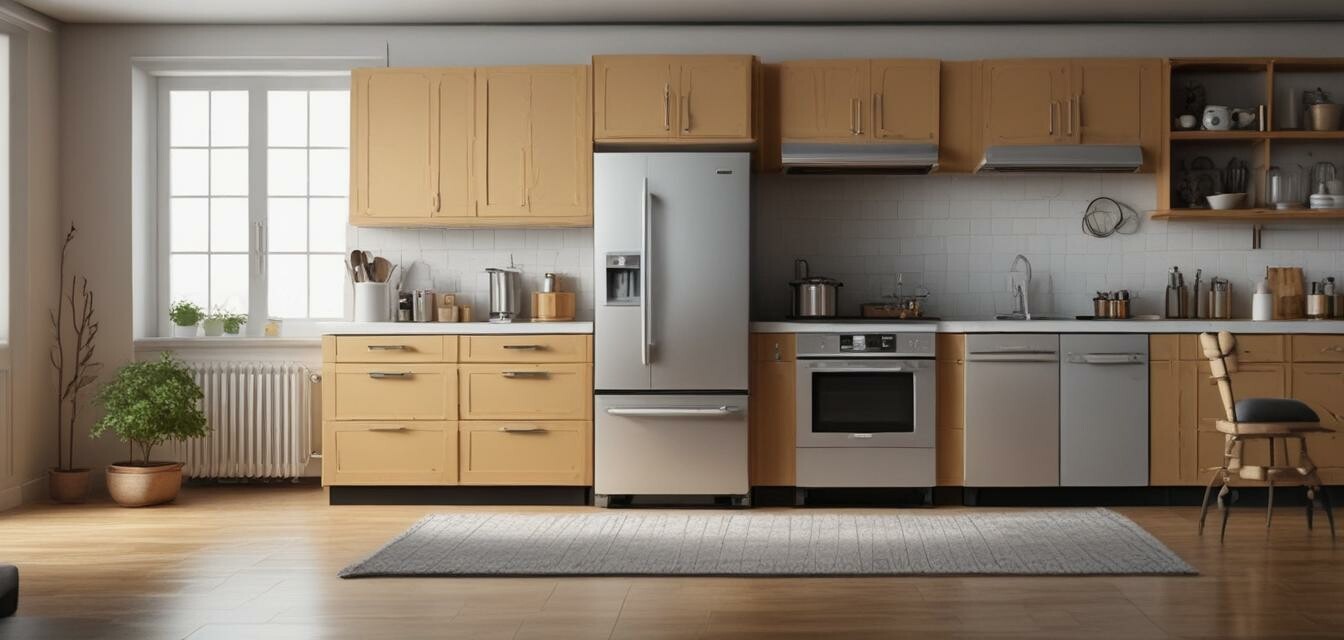
DIY Projects for Improving Home Appliance Efficiency
- Enhancing appliance efficiency can save money on energy bills.
- DIY projects can be economical and environmentally friendly.
- Many simple modifications can lead to significant improvements.
- Regular maintenance of appliances is key to ensuring efficiency.
In an era where energy conservation is becoming increasingly important, enhancing the efficiency of your home appliances can lead to significant savings on your electricity bills and contribute to a greener planet. This article explores various DIY projects that you can carry out to optimize your home appliances, ensuring they run as efficiently as possible.
Why focus on appliance efficiency?
Improving the energy efficiency of your appliances not only reduces your carbon footprint but can also lead to substantial savings over time. Here are some reasons why you should consider it:
- Lower utility bills
- Extended appliance lifespans
- Better performance
- Environmentally friendly practices
Simple DIY projects to improve appliance efficiency
The good news is that many DIY projects require minimal tools and can be done in a few hours. Below are some effective ways to enhance the efficiency of your home appliances:
1. Cleaning and maintaining your appliances
Regular cleaning can dramatically improve an appliance's efficiency. Here are some tips:
- Vacuums: Empty the dust container and rinse the filter regularly.
- Refrigerators: Clear out the coils to allow for better airflow.
- Washing Machines: Run a cleaning cycle with vinegar to remove soap scum.
| Appliance | Maintenance Task | Frequency |
|---|---|---|
| Refrigerator | Clean coils | Every 6 months |
| Dishwasher | Check spray arms | Every month |
| Washing Machine | Clean detergent drawer | Every month |
2. Insulating hot water pipes
One effective way to maintain water temperature and reduce heating costs is to insulate your hot water pipes:
- Measure the length of your hot water pipes.
- Purchase pipe insulation from a local hardware store.
- Wrap the insulation around the pipes, securing it with tape.
3. Calibrating your thermostat
Improving the efficiency of your heating and cooling systems involves proper calibration:
- Check temperature accuracy using a separate thermometer.
- Adjust settings seasonally to avoid unnecessary energy use.
- Consider installing a programmable thermostat for automated scheduling.
4. Using energy-efficient settings
Most modern appliances come equipped with energy-saving modes. Make sure to:
- Use eco-mode on your dishwasher and washing machine.
- Wash laundry in cold water to save on heating costs.
- Set your refrigerator to the recommended temperature of 37°F (3°C).
Resources and links for further learning
For more information on how to improve the efficiency of specific appliances, consider visiting our dedicated pages:
- Air Conditioners: Optimize cooling efficiency
- Dishwashers: Tips for lower energy consumption
- Heaters: Ensure proper maintenance for optimal performance
- Microwave Ovens: Cooking with efficiency
- Refrigerators: Maintaining optimal cooling
- Washing Machines: Best practices for energy savings
Key takeaways from DIY projects
- Regular maintenance is essential for appliance efficiency.
- Simple DIY projects can yield significant savings.
- Energy-efficient settings and proper thermostat calibration are key.
- Investing time in insulation can lead to long-term cost benefits.
Conclusion
Engaging in DIY projects to improve appliance efficiency is not only rewarding but can also lead to noticeable savings on your energy bills and a reduced carbon footprint. By taking proactive measures such as cleaning, insulating, and optimizing settings, you’re making a positive change for your home and the environment.
Pros
- Cost-effective solutions compared to replacements.
- Improved performance and longevity of appliances.
- Contributes to environmental sustainability.
Cons
- May require some basic DIY skills.
- Initial time investment for cleaning and insulating.
